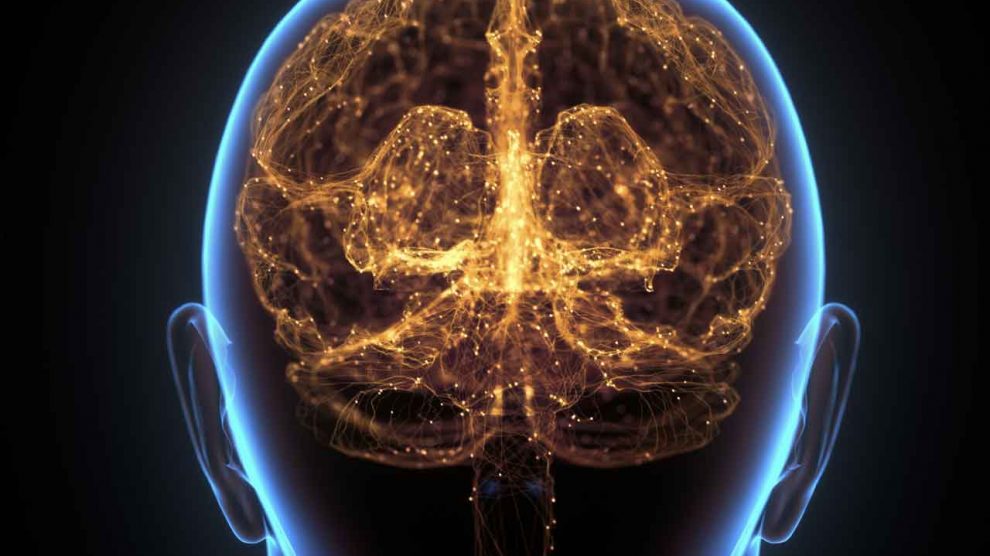What is a stroke? What is it caused by? What are the symptoms? How is it diagnosed? How are you treated? What are the possible complications? How do you live after a stroke?
What is a stroke?
A stroke (also called a cerebral event or cerebral infarction or cerebrovascular event) occurs as a result of damage to the blood supply to a certain part of the brain it may cause permanent damage to the brain tissue, or, alternatively, temporary damage following a temporary decrease in the rate of blood flow to a certain area of the brain.
What causes a cerebrovascular event?
There are two main types of stroke:
• Ischemic stroke . In 90% of cases, a stroke is caused by a blockage of a blood vessel carrying blood to the brain as a result of a blood clot. The clot can form in the area of the blockage or reach the area from another place in the body (then it is called an embolism).
• Hemorrhagic (hemorrhagic) stroke . In 10% of cases, a stroke is caused by a cerebral hemorrhage. Cerebral bleeding is usually the result of untreated high blood pressure or a defect in the wall of the blood vessel – which makes it weak and prone to bursting and leaking.
How do you prevent a stroke?
The best way to treat a cerebrovascular event is primary prevention, which means reducing the risk of developing a cerebrovascular event by balancing all cardiovascular risk factors.
This is about balancing high blood pressure and diabetes , reducing blood lipid levels (mainly cholesterol ), avoiding smoking and excessive alcohol consumption, maintaining a healthy body weight and a healthy diet , and making sure to exercise regularly .
Adopting a healthy lifestyle is the most effective means of primary prevention of ischemic and hemorrhagic strokes, but sometimes it is necessary to use medication as well.
If you suffer from diabetes, the doctor is expected to decide on medication to balance the diabetes;
If you suffer from high levels of blood fats (hyperlipideamia), and especially high levels of blood cholesterol, the doctor is likely to decide on drug treatment to balance blood cholesterol levels;
And if you suffer from high blood pressure, the doctor is expected to decide on medication to balance the blood pressure.
One of the most common and important causes of cerebrovascular event is atrial fibrillation (or atrial fibrillation). To prevent a cerebrovascular event in such a situation, you must take an anticoagulant (anticoagulation). Using anticoagulants significantly (by about 70%) reduces the risk of stroke. The doctor chooses the anticoagulant drug according to the patient’s specific risk factors.
If atherosclerosis is detected (in tests such as Doppler or head-neck CTA ), the doctor is expected to decide on treatment with an anti-platelet drug such as aspirin or clopidogrel (trade name: Flavix) and to consider invasive intervention in the product artery.
What is the prevalence of stroke?
About 1 out of every 5 people will suffer a stroke during their lifetime (or a transient cerebral event), which – according to the World Health Organization – is the number 2 cause of death in the world (after ischemic heart disease ). Furthermore, stroke is the number 1 cause of disability in the Western world.
The risk of stroke increases with age and with the appearance of risk factors: high blood pressure, diabetes, excess fats (including cholesterol) in the blood, overweight, smoking, excessive alcohol consumption and drug use.
In recent years, the average age at which a cerebrovascular event appears for the first time has been gradually increasing.
What are the symptoms of a stroke?
A cerebrovascular event is manifested in a wide variety of clinical symptoms – depending on the area of the brain affected by the decrease in blood supply.
A cerebrovascular event can manifest itself in the following symptoms:
- Weakness of the body or of a single limb.
- Weakness of the facial muscles (which causes a distortion in the appearance of the face).
- Difficulty producing or understanding speech.
- Sudden loss of part of the visual field in one or both eyes.
- instability.
- Confusion and blurred consciousness.
What to do if symptoms reminiscent of a cerebrovascular event appeared?
If symptoms of a cerebrovascular event appear or are suspected, the patient should be rushed to the emergency room by Ambulance (and not independently). At the hospital, the patient undergoes an orderly assessment aimed at diagnosing a stroke. in the brain ( CT or MRI , according to the characteristics of the case).
If a stroke is diagnosed, medical treatment is started immediately. It is important that the treatment is given as quickly as possible to prevent irreversible brain damage. Therefore, in any case of the appearance of an acute or sudden neurological symptom, you should immediately go to the emergency room.
What is the initial treatment for a stroke?
Providing treatment in real time – in the first hours of the cerebrovascular event – can completely change the clinical course of the cerebrovascular event and the severity of the permanent disability that will result.
As soon as the cerebrovascular event occurs, a narrow and expensive time window opens, during which it is still possible to save brain tissue before its final death. Hence the great importance of getting to a hospital quickly – preferably by ambulance, since already there the skilled ambulance staff can provide essential first aid.
If it is an ischemic stroke, there are several possible treatments:
• Thrombolytic drug therapy. It is a preparation called tPA that is injected into a vein and is used to dissolve blood clots. This treatment may increase the risk of bleeding, so it is not given if it is suspected that the stroke is hemorrhagic (i.e. caused by intracerebral bleeding) or if it turns out to be extensive ischemic brain damage that may lead to bleeding of the brain tissue that can no longer be saved.
• Cerebral catheterization to open a blocked artery, usually with aspiration of the blocking blood clot. Cerebral catheterization is performed only by specialists who are skilled in this.
These treatments (thrombolysis and brain catheterization) can only be given if most of the involved brain tissue has not yet suffered irreversible damage, and can be saved. As mentioned, it is a short period of time between the appearance of the symptoms of the stroke and the death of the damaged tissue.
The decision of what action to take (after it has been determined that the brain tissue damaged by the cerebrovascular event can still be saved is made in real time by senior neurologists who have specialized in the treatment of stroke. These work in collaboration with brain catheterists (whose medical name for their field of practice is invasive neuroradiology).
What treatments can I expect next?
A person diagnosed with a stroke is usually admitted to the hospital for treatment and monitoring until his condition stabilizes. Later – if necessary – he is sent for rehabilitation at home or in a suitable rehabilitation setting. The purpose of this phase is to return the person to the best possible functional state – according to his state after the event.
The amount of time devoted to rehabilitation is determined by the severity of the stroke. It may be relatively short (a few weeks) or prolonged (long months). Another goal of the rehabilitation procedure is to teach the patient to live with the new limitations that may remain permanently after the event.
Does a stroke have long-term consequences?
A stroke is a disease that can have manifestations of different degrees of severity, but in many cases it is a disease that can be very serious and even fatal.
When a stroke does not end in death it may leave behind a disability due to the damage caused to the brain tissue. Among other things, the affected person may suffer from limitations in walking, moving the limbs, eating, speaking and seeing. A stroke may also damage the patient’s mental functions.
The limitations can be of varying degrees of severity – from the mildest, which allow a completely normal life, to severe disorders that require full nursing care.
Prevention of recurrent stroke
Patients who have experienced a stroke are at increased risk of recurrent strokes, so it is important to prevent them.
Secondary prevention is a medical term that means adjusting the long-term treatment given to patients to prevent a recurrence of a medical problem from which they suffered. In the case discussed here, the intention is to prevent the recurrence of a stroke.
After the medical condition stabilizes following the acute stroke, the doctor tries to find out the reason why the stroke occurred in order to adjust the optimal preventive treatment. At the same time, he does various tests – such as imaging tests and blood tests – to choose the best preventive treatment.
Medication
In all stroke cases, it is necessary to adjust drug treatment.
In the case of an ischemic stroke, drugs that thin the blood (antithrombotic therapy) must be used. In most cases, it is acceptable to give treatment with platelet anticoagulants (antiplatelet/antiaggregation) such as aspirin (brand names: Cartia, Micropyrin) or clopidogrel (brand name: Flovix).
In the case of a stroke caused by atrial fibrillation or by an embolism, treatment with an anticoagulant (anticoagulation) drug is often required. These are drugs such as apixaban (brand name: Eliquis) , rivaroxaban (brand name: Xeralto) , dabigatran (brand name: Predaxa) or warfarin (brand name: Coumadin) .
In cases of cerebrovascular event caused by bleeding, it is necessary to avoid the use of blood-thinning drugs, as they increase the risk of further cerebral bleeding. Only after the stroke and cerebral hemorrhage have passed, and depending on the risk factors, will the doctor examine whether it is necessary to add a blood thinner.
Balancing blood pressure levels and reducing cholesterol levels
In all patients who have had a stroke and suffer from high blood pressure, it is very important to treat the blood pressure and balance it carefully. To this end, doctors prescribe medications to treat high blood pressure and instruct patients to monitor their blood pressure and pulse.
High cholesterol levels can also cause an ischemic stroke, and patients who have had an ischemic stroke and suffer from hyperlipidemia will usually receive treatment designed to reduce blood cholesterol levels.
These are usually drugs from the statin family such as atorvastatin (brand name: Lipitor) , rosuvastatin (brand name: Crestor) , simvastatin (brand name: Simovil) and pravastatin (brand name: Prebllip) .
These drugs are sometimes given in combination with other drugs such as ezetimibe (trade name: Eztrol) or injectable drugs from the family of PCSK9 inhibitors (such as Rapata or Parluant ).
invasive procedures
Sometimes an invasive medical procedure is required for optimal permanent treatment of the stroke mechanism: surgery to open a carotid artery using a vascular surgeon, catheterization to open a cerebral or carotid artery using a stent, cardiac catheterization using a cardiologist to close the atrial septum, cardiac catheterization using a cardiologist to close the left atrium In patients who for various reasons cannot take anticoagulants.
How soon will I “come back to myself”?
Recovery from a stroke depends on several factors, including the patient’s condition before the stroke, the severity of the injury and the degree of success of the initial treatment.
Sometimes the remaining disability is minimal and allows a return to the functional state that was before the event, but sometimes the injury is severe, and life after the event must be adjusted to the functional limitation that was created.
If there is a significant functional limitation, it is recommended to seek help: the family doctor or the nurses or the social worker at the clinic will refer you, if necessary, to the appropriate services: occupational therapy, physical therapy and nursing assistance if necessary.












Add Comment